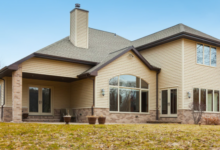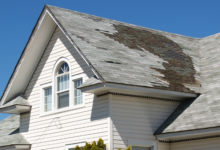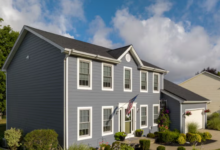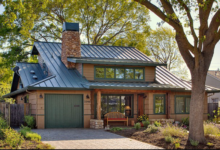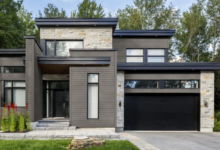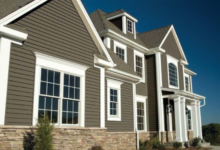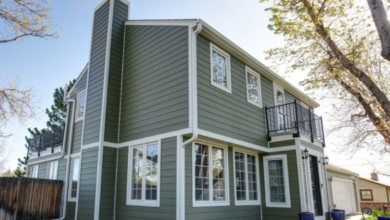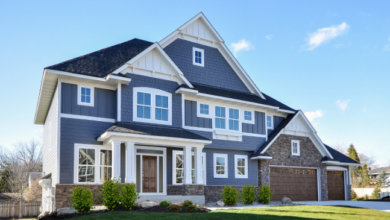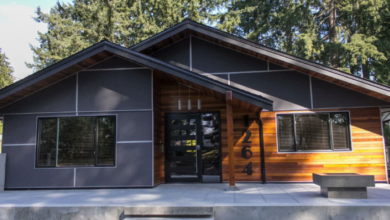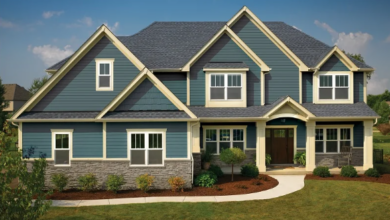How Much Does Siding Cost? Pricing, Benefits, and Top Products
How Much Does Siding Cost – Discover detailed information on siding costs, benefits, and top products. Learn how to choose the right siding for your home and where to purchase it.
How Much Does Siding Cost? A Comprehensive Guide
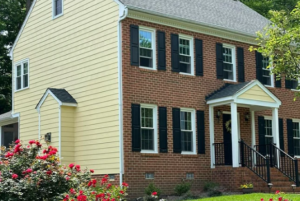
Choosing the right siding for your home is a significant decision that impacts both aesthetics and functionality. Understanding the costs, benefits, and available options is crucial. In this guide, we’ll delve into the various aspects of siding, including detailed information, benefits, and top products to help you make an informed choice.
Understanding Siding Costs
Siding costs can vary widely based on material, labor, and regional factors. Here’s a breakdown of common siding materials and their average costs:
| Siding Material | Average Cost per Square Foot |
|---|---|
| Vinyl Siding | $2 – $7 |
| Wood Siding | $5 – $10 |
| Fiber Cement Siding | $5 – $10 |
| Metal Siding | $3 – $11 |
| Stone Veneer Siding | $15 – $30 |
Note: Prices are approximate and can vary based on location and specific product choices.
Benefits of Different Siding Materials
Choosing the right siding material is a crucial decision for any homeowner, as it directly impacts the home’s aesthetics, durability, and energy efficiency. Each material offers unique benefits and drawbacks, making it essential to understand their characteristics. Here’s a breakdown of the benefits of different siding materials:
1. Vinyl Siding:
- Affordability: Vinyl siding is generally one of the most cost-effective options.
- Low Maintenance: It requires minimal upkeep, typically only needing occasional cleaning.
- Durability: It resists rot, insects, and moisture damage.
- Variety: Available in a wide range of colors and styles.
- Easy Installation: Relatively easy to install, which can reduce labor costs.
2. Wood Siding:
- Natural Beauty: Provides a classic and timeless aesthetic.
- Versatility: Can be stained or painted in various colors.
- Eco-Friendly: A renewable resource, especially when sourced responsibly.
- Customization: Offers flexibility in design and detailing.
3. Fiber Cement Siding:
- Durability: Highly resistant to fire, insects, rot, and weather damage.
- Low Maintenance: Requires minimal upkeep.
- Versatility: Mimics the look of wood, stucco, or masonry.
- Longevity: Long lifespan, often lasting 50 years or more.
- Fire Resistance: A very important safety feature.
4. Metal Siding (Aluminum or Steel):
- Durability: Extremely durable and resistant to impact, fire, and pests.
- Low Maintenance: Requires minimal upkeep.
- Longevity: Long lifespan.
- Energy Efficiency: Can reflect sunlight, reducing cooling costs.
- Recyclability: Recyclable materials.
5. Brick Siding:
- Durability: Extremely durable and long-lasting.
- Low Maintenance: Requires minimal upkeep.
- Fire Resistance: Excellent fire resistance.
- Insulation: Provides excellent thermal mass, helping to regulate indoor temperatures.
- Aesthetic Appeal: Classic and timeless look.
6. Stone Siding (Natural or Manufactured):
- Durability: Highly durable and resistant to weather and pests.
- Aesthetic Appeal: Provides a luxurious and natural look.
- Longevity: Long lifespan.
- Increased Property Value: Can significantly enhance a home’s curb appeal and value.
7. Engineered Wood Siding:
- Durability: Resistant to rot, decay, and pests.
- Aesthetic Appeal: Provides the look of natural wood.
- Cost-Effective: Often more affordable than natural wood.
- Stability: Less prone to warping and cracking than natural wood.
Key Considerations:
- Climate: Consider your local climate and choose a siding material that can withstand the prevailing weather conditions.
- Budget: Establish a budget and explore siding options that fit within your financial constraints.
- Maintenance Requirements: Evaluate the maintenance requirements of different siding materials and choose one that aligns with your lifestyle.
- Architectural Style: Select a siding material that complements your home’s architectural style and enhances its overall appearance.
- Energy Efficiency: Consider the energy efficiency of the siding material to reduce heating and cooling costs.
Top Siding Products
Here are five top siding products to consider:
1. James Hardie Fiber Cement Siding
James Hardie Fiber Cement Siding offers durability and a variety of styles. It’s known for its resistance to fire, pests, and rot.
- Features: Available in multiple textures and colors, low maintenance.
- Price: Approximately $5 – $10 per square foot.
- Pros: Durable, fire-resistant, low maintenance.
- Cons: Higher installation cost compared to vinyl.
2. CertainTeed Vinyl Siding
CertainTeed Vinyl Siding is a popular choice for its affordability and variety.
- Features: Wide range of colors and styles, low maintenance.
- Price: Approximately $2 – $7 per square foot.
- Pros: Cost-effective, easy to install, low maintenance.
- Cons: Less durable than fiber cement or wood.
3. LP SmartSide Engineered Wood Siding
LP SmartSide offers the beauty of traditional wood with added durability.
- Features: Treated engineered wood, available in various styles.
- Price: Approximately $5 – $10 per square foot.
- Pros: Aesthetic appeal of wood, resistant to pests and decay.
- Cons: Requires periodic maintenance.
4. Mastic Metal Siding by Ply Gem
Mastic Metal Siding provides a sleek, modern look with durability.
- Features: Aluminum and steel options, various finishes.
- Price: Approximately $3 – $11 per square foot.
- Pros: Durable, low maintenance, resistant to pests.
- Cons: Can be prone to dents.
5. Eldorado Stone Veneer Siding
Eldorado Stone Veneer offers the look of natural stone without the weight.
- Features: Variety of stone styles and colors.
- Price: Approximately $15 – $30 per square foot.
- Pros: Aesthetic appeal, durable.
- Cons: Higher cost, professional installation recommended.
Comparison Table
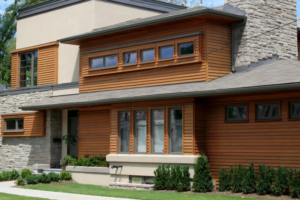
| Product | Use Case | Pros | Cons | Price per Sq Ft | Features |
|---|---|---|---|---|---|
| James Hardie Fiber Cement Siding | Durable, fire-resistant | Low maintenance, variety of styles | Higher installation cost | $5 – $10 | Multiple textures and colors |
| CertainTeed Vinyl Siding | Affordable, versatile | Cost-effective, easy to install | Less durable | $2 – $7 | Wide range of colors and styles |
| LP SmartSide Engineered Wood | Natural wood appearance | Aesthetic appeal, pest-resistant | Requires maintenance | $5 – $10 | Treated engineered wood |
| Mastic Metal Siding by Ply Gem | Modern, sleek design | Durable, low maintenance | Can dent | $3 – $11 | Aluminum and steel options |
| Eldorado Stone Veneer Siding | Luxurious stone look | Aesthetic appeal, durable | Higher cost | $15 – $30 | Variety of stone styles and colors |
Where to Buy and How to Purchase
When it comes to purchasing siding materials, whether vinyl or other types, you have several avenues to explore. Here’s a breakdown of where to buy and how to approach the purchase:
Where to Buy Siding:
- Home Improvement Stores:
- Retail giants like Home Depot and Lowe’s offer a wide selection of siding materials, including vinyl, wood, and fiber cement.
- These stores are convenient for homeowners looking for readily available materials and basic supplies.
- Specialized Siding Suppliers:
- These suppliers focus specifically on siding products, offering a broader range of brands, styles, and quality options.
- They often have knowledgeable staff who can provide expert advice and assistance.
- Examples of these types of providers are companies like ABC Supply.
- Lumberyards:
- For wood siding, lumberyards are the primary source. They offer a variety of wood types, grades, and finishes.
- Lumberyards may also carry other siding materials, but their expertise lies in wood products.
- Online Retailers:
- Online platforms like Amazon and specialized building material websites offer convenience and competitive pricing.
- However, it’s essential to research reputable sellers and carefully review product descriptions and customer reviews.
- Direct from Manufacturers:
- In some cases, you can purchase siding materials directly from manufacturers. This option is often preferred for large orders or custom projects.
- Companies like Georgia-Pacific, provide online resources to locate dealers of their products.
How to Purchase Siding:
- Determine Your Needs:
- Measure your home’s exterior to calculate the required amount of siding.
- Consider your budget, climate, and aesthetic preferences.
- Decide on the specific type of siding material and style you want.
- Research and Compare:
- Research different brands, products, and suppliers.
- Compare prices, quality, and warranty information.
- Read customer reviews and seek recommendations from friends or family.
- Obtain Multiple Quotes:
- Get written estimates from several suppliers or contractors.
- Ensure the quotes include detailed information about materials, labor costs, and project timelines.
- Inspect Materials:
- If possible, inspect the siding materials before purchasing them.
- Check for any defects, damage, or inconsistencies.
- Check Warranty Information:
- Always check the warranty information that is provided by the manufacturer.
- Consider Installation:
- Decide whether you will install the siding yourself or hire a professional contractor.
- If hiring a contractor, obtain multiple quotes and verify their credentials.
- Place Your Order:
- Once you have made your decision, place your order and arrange for delivery or pickup.
Key Considerations:
- Local Building Codes: Ensure that the siding materials you choose comply with local building codes and regulations.
- Delivery and Storage: Arrange for delivery and proper storage of the siding materials to prevent damage.
- Installation Accessories: Remember to purchase necessary installation accessories, such as nails, flashing, and trim.
By following these guidelines, you can confidently purchase the right siding materials for your home.
FAQs
1. What factors influence siding costs?
- Material type, labor, regional pricing, and home size.
2. How long does siding installation take?
- Typically 1-2 weeks, depending on home size and material.
3. Can I install siding myself?
- It’s possible but professional installation is recommended for best results.
4. How do I maintain my siding?
- Regular cleaning and inspections; maintenance varies by material.
5. Does new siding increase home value?
- Yes, quality siding can enhance curb appeal and resale value.
Choosing the right siding involves considering costs, benefits, and aesthetics. By understanding your options and consulting with professionals, you can make an informed decision that enhances your home’s value and appearance.
